Reteti Elephant Sanctuary: tackling the struggle for survival
A look at the valuable work being carried out by Kenya’s first indigenously owned elephant orphanage
Lying in the sweeping scrubland of Kenya’s Northern Frontier, Reteti Elephant Sanctuary is a unique oasis, where sick, injured and abandoned baby elephants find a new life and love. Thanks to the Samburu people donating their land to create a peaceful place for rescued calves to heal and recover, Reteti is the first indigenously owned elephant orphanage in the country.
“I feel humbled caring for these babies,” says Dorothy Lowakutuk, the head keeper. “Seeing them happy comes with a lot of joy that I lack the words to explain. We sing and talk to them, play ball with them, mud-bathe them when it’s hot and sleep beside them at night. They are fragile and easily stressed. Sometimes when they are suffering you get deeply wounded, but when I see other calves doing well, it gives me strength and drives me on.”
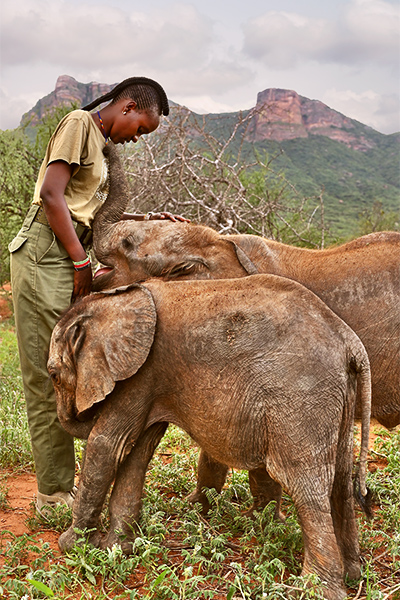
Keeper Naomi with Ngare Mara and Lodokejek / Image: LouAnne Brickhouse
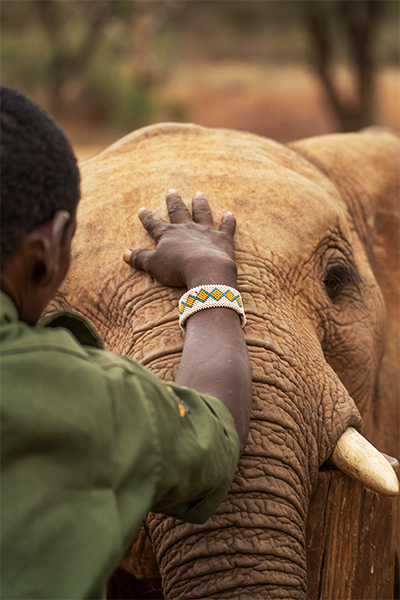
Keeper Lemerash with an elephant / Image: Simon Pocock
Lowakutuk is one of the sanctuary’s many female keepers caring for these beautiful creatures and blazing a trail in conservation. “We’re opening a world of possibilities where women are equally entitled to working on their own land, protecting their own wildlife,” says co-founding manager Katie Rowe who brought in all the keepers and rangers from the resident Samburu community. As nomadic pastoralists, they use their knowledge and deep and intuitive familiarity with animals and the land to care for the elephants and wildlife.
Much of Reteti’s success is due to the special bond between the local women keepers, who raise the floppy-eared orphans and teach them to be wild, so that one day they could return to the herds adjoining the land in the Namunyak Wildlife Conservancy. The area spans 850,000 acres of pristine wilderness surrounded by the fabled Mathews Mountain range.

Preparing milk / Image: The Sarara Foundation

“I’ve seen their successes and their heartbreaks,” says Ami Vitale, a multi-award-winning National Geographic photojournalist, who spent several years with the community documenting Reteti’s journey since the first elephant arrived in September 2016. Her stunning new film Shaba tells their story through the female keepers and one feisty little 15-month-old calf named Shaba who arrived traumatised after poachers shot her mother. Over time, Shaba then became the first matriarch of the sanctuary’s orphan herd. “Shaba was angry and aggressive when she arrived, neither ready or willing to accept the help of humans,” says Vitale. “She became instrumental at the sanctuary, caring for each new orphan and teaching the keepers how to be better caretakers.”
At the moment, the nursery has 40 calves, each with its own heart-breaking story: orphaned by the ravages of drought, falling down a well or clashing with humans encroaching on the few wild places left… The plight of motherless infants can be harrowing. Among the recent arrivals, young calf Sitiin was found by cattle herders and rescued from a remote and unreachable mountain, where she bravely guarded her mother’s body for three days.
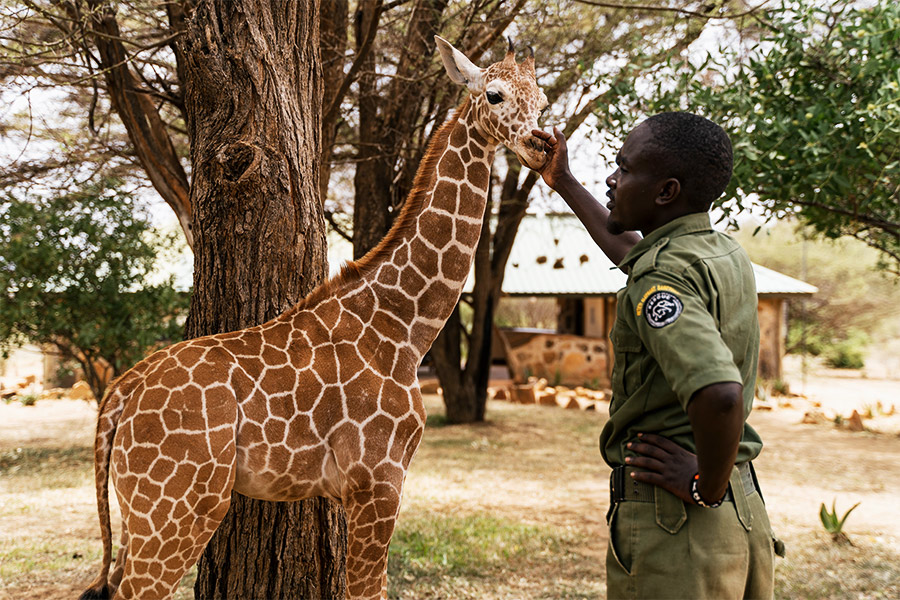
Keeper Lenanyokie with Shah, a rescued giraffe

Nurturing and raising these intelligent, complex and emotional animals through the grief and trauma of family loss, and then easing them back to their natural habitat, is a long and difficult process. “It’s very emotional for us,” says Lowakutuk. “It’s taught us to love with grace, accept our little elephants when they come, and allow them to leave when it’s time. These young ones that we rescue will remember us forever. It’s a beautiful thing.” So far, the team has successfully returned five calves to their families and released a group of five elephants back to the wild.
In addition to being a refuge for the elephants, Reteti is transforming the community. “It’s brought much-needed jobs and income for the region,” says Vitale, who shifted towards compelling wildlife conservation stories after working as a photojournalist in conflict zones, including Kashmir, Angola and Afghanistan. “By caring for and protecting the elephants, the Samburu people are also helping care for the land they live on. That’s when an ecosystem is in balance: when you see people and wildlife both benefiting.”
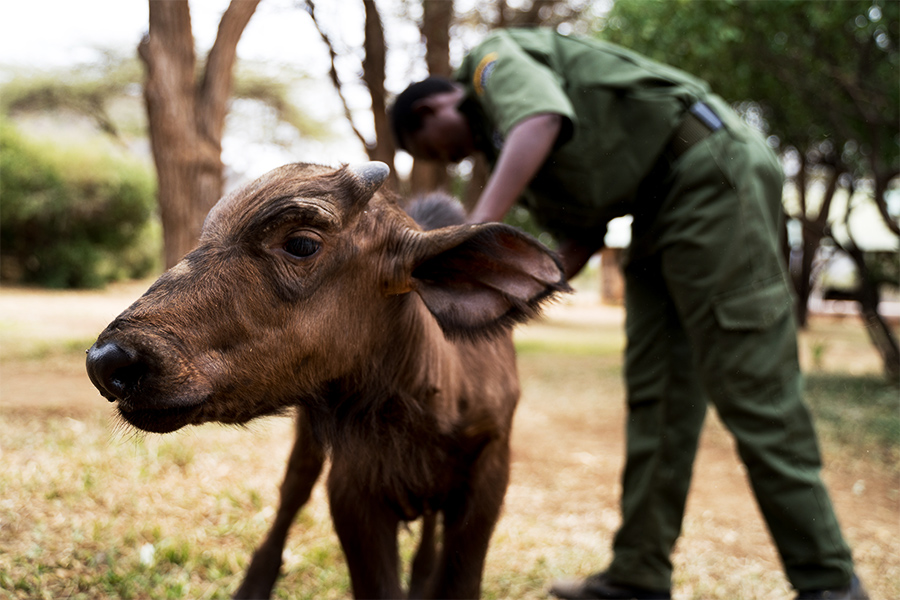
Keeper Naomi Leshongoro with rescued buffalo Nkachau / Image: Simon Pocock

Reteti is also home to other animals, including zebra foals, giraffe, antelope, buffalo and rhino calves. The animals struggle for survival against persistent threats from deforestation, human-wildlife conflict and occasionally poachers. The biggest threat, however, is climate change, with longer and more intense droughts leading to conflicts, human and animal displacement, disease and food insecurity. After the worst drought in 40 years, the sanctuary has recently been overwhelmed with rescues and an influx of four-legged orphans.
Reteti is equally committed to preserving a habitat for animals. The team works with the Namunyak Conservancy to oversee grazing routes of pastoralists, in an effort to reduce human-wildlife confrontations. The semi-nomadic Samburu, cousins of the Maasai, revered elephants, considering them as ancient relatives and co-existing with them peacefully since the dawn of time. Now, working with the sanctuary, they have come together with rival tribes to curb poaching and protect the estimated 6,000 elephants from near-extinction.
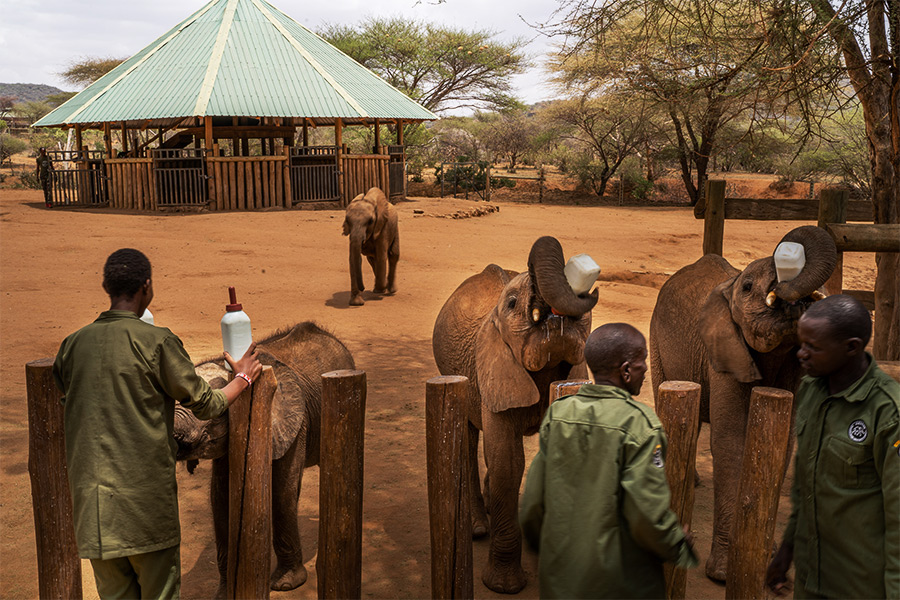
Time for a drink / Image: The Sarara Foundation

These magnificent giants are essential to the wellbeing and survival of all other species. Elephants germinate trees, create grasslands and seal waterholes so that they last longer into the dry season, which supports all other animals and humans.
According to Rowe, this community enterprise has changed the way the Samburu and other tribes relate to wild animals. “We take care of the elephants, and the elephants are taking care of us,” says Lowakutuk.
“This is the result of an expanding grassroots movement of community-driven conservation across northern Kenya,” says Vitale, “a movement that is growing new economies, improving lives and conserving natural resources.”
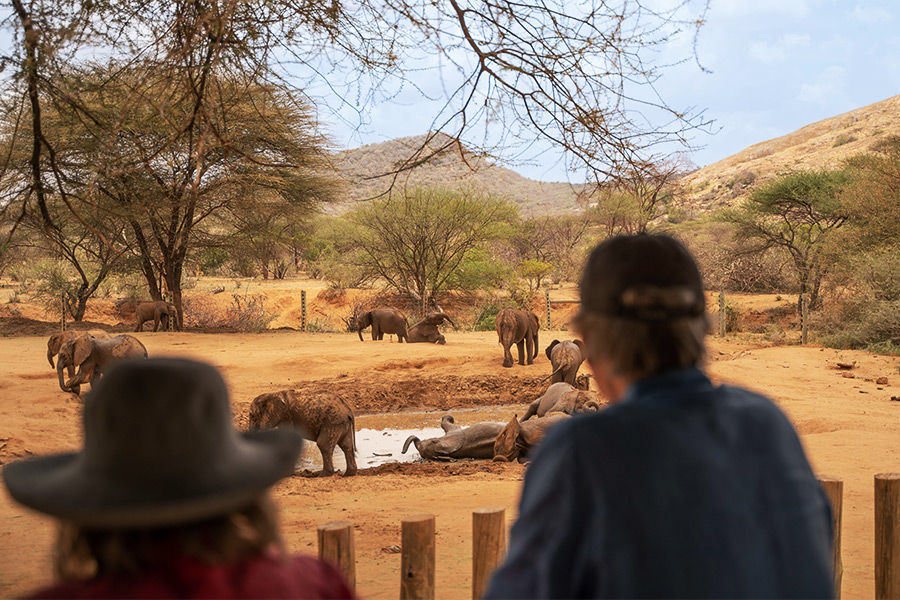
Visitors watching the action at Reteti

The sanctuary is open to visitors all year round. Viewing platforms offer a close-up look of the elephants, giraffes and other infants running rapturously for their bottles, playing and cooling off in the midday sun. There is nearby accommodation at the community-owned Sarara Camp safari tents or Sarara Treehouses, six luxurious treetop lodges tucked-away in a forest glade, offering game drives and other wilderness excursions. Or there’s Reteti House, nestled on the hillside with soul-stirring views, just a ten-minute-walk from the sanctuary.
Help Reteti’s work by donating or through adopting an orphan – find details at reteti.org. See Ami Vitale’s film, Shaba, by donation to directly benefit the sanctuary on shabafilm.org.